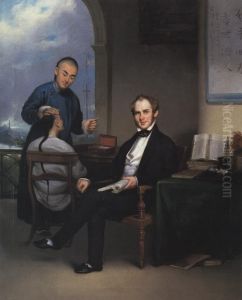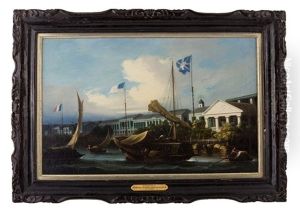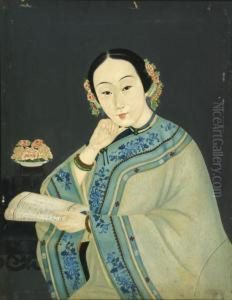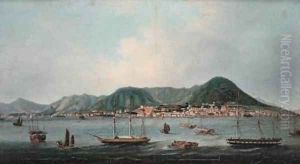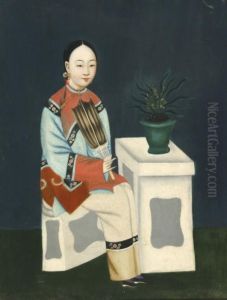Lam Qua Paintings
Lam Qua, born in 1801 in Guangzhou (Canton), China, was a notable Chinese painter known for his Western-style portraits. He was one of the first Chinese artists to adopt Western techniques in his work, a significant deviation from traditional Chinese painting of his time. Lam Qua's real name was Guan Qiaochang, but he is widely known by his Cantonese name, especially in the context of his professional and artistic endeavors.
Lam Qua was trained by the English painter George Chinnery in the early 19th century. Chinnery, who had settled in Guangzhou, was instrumental in introducing Western painting techniques to China. Under Chinnery's tutelage, Lam Qua mastered these techniques and became proficient in oil painting, a medium that was relatively unfamiliar in China at the time.
His reputation grew rapidly, and he became well-known for his portraits of Western merchants, missionaries, and their families who were living in or visiting Guangzhou. Beyond portraiture, Lam Qua is also remembered for his series of paintings depicting patients with large tumors or other significant medical conditions. These paintings were commissioned by Dr. Peter Parker, an American missionary and physician who founded a hospital in Guangzhou. Parker used these detailed portraits as case studies to advance medical knowledge and to fundraise for his hospital.
Lam Qua's work is significant for several reasons. Firstly, he represents a cultural bridge between China and the West during a period when such exchanges were limited. His ability to blend Western techniques with Chinese sensibilities created a unique style that was highly sought after by his contemporaries. Secondly, his medical paintings provide a fascinating intersection between art and science, serving as historical documents of medical conditions and treatments in the 19th century.
Despite his death in 1860, Lam Qua's legacy endures, with his paintings held in various collections around the world, including the Peabody Essex Museum in Salem, Massachusetts, and the Hong Kong Museum of Art. His work continues to be studied and admired for its historical significance and artistic merit, offering insight into the cultural and scientific exchanges between China and the West during the 19th century.

